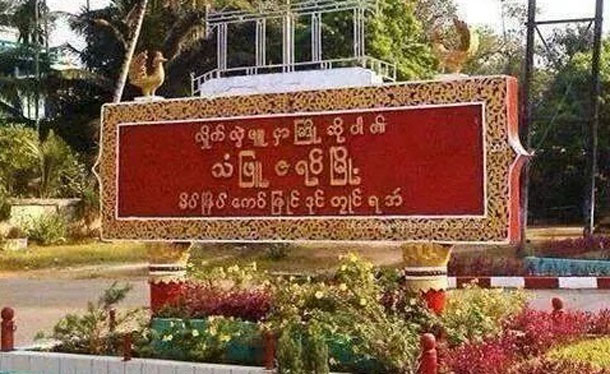RANGOON — The Mon State parliament says it will allow the Mon language to be posted on government signage for the first time, in an informal but potentially symbolic agreement viewed as helping to preserve the ethnic minority group’s linguistic identity.
“This is Mon State. As such, we need to have the Mon language written by every department of the government,” said Nai Tala Chan, a Mon State lawmaker from the All Mon Regions Democracy Party (AMDP) who put forward the proposal early this month.
After its submission to the state legislature on Dec. 3, Min Nwe Soe, who serves as minister for literature and culture in Mon State, told parliament that the government would endorse the proposal.
“Min Nwe Soe told us in parliament that we could post both Mon and Burmese languages at any departments in townships and villages,” said Nai Tala Chan. “No one could ban it, he [Min Nwe Soe] said.”
Reports from the ground, however, have indicated that some local authorities continue to resist the posting of dual language signage, according to Aung Naing Oo, another lawmaker.
“They [authorities] have declined to give a direct order to do it, because the official working language is Burmese. They told us they could not give their permission to do it,” he said.
With the Mon language allowance apparently selectively enforced, Mon lawmakers have distributed letters to townships and villages in the state, telling local authorities that they have the right to post Mon language signage in government buildings such schools, hospitals and administrative departments.
“Our distribution of letters told our people to write both Mon and Burmese whenever they put up signboards in villages and townships,” Nai Tala Chan said.
Ethnic Mon are a majority in most townships in Mon State, but in some townships that are not majority Mon, resistance to the movement has emerged.
“We have been able to do it [post Mon language signs] depending on whether the area has a big population of our ethnic Mon. If there are majority Burmese [Bamar] and the people do not agree to post both languages, we cannot do this,” said Nai Tala Chan, citing an example in Jar Kan village, Thanbyuzayat Township, where the Mon village head in August put up a signboard in the Mon language, only to see the township authority order it removed.
Some Mon lawmakers have told the Jar Kan village leader to repost the signboard, and inform them if the township authority again instructs that it be taken down.
Article 22(a) of Burma’s 2008 Constitution states that the Union government shall assist in “develop[ing] language, literature, fine arts and culture of the National races,” a provision that has been wholly contravened in past years by the ethnic Bamar-dominated government, which has for decades sought to systematically suppress use of the myriad ethnic minority languages spoken in Burma.
Ironically, the Mon alphabet was adapted to serve as the written means of communicating in Burmese, the country’s official language.
Earlier this year, the Mon State parliament passed a bill allowing for the teaching of ethnic languages in government primary schools for the first time in more than 50 years.
Nai Tala Chan said that while there remained work to do in achieving full recognition of the Mon minority’s rights, the government’s allowance of Mon language signage would mark a step in the right direction.
“We know this Constitution does not afford full rights for our ethnic people. But we only have one road [the Constitution] at the moment. This is why we need time to fight, step by step,” Nai Tala Chan said.

















